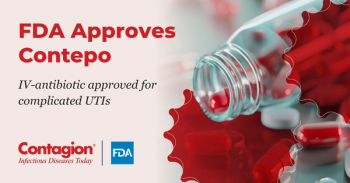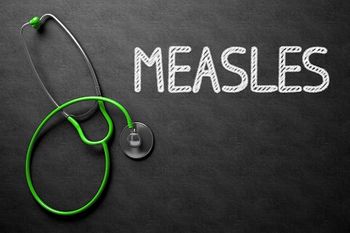
Developing a Risk Prediction Model for Health Care-Associated C Diff Infection
A team of investigators set out to identify whether a risk prediction model that was developed at Novant Health could accurately identify individuals at a high-risk for health care-associated C diff infection.
Clostridioides difficile infection is a challenging condition for clinicians to treat. In November, the US Centers for Disease Control and Prevention (CDC) updated its
It has been previously established that individuals who receive broad-spectrum antibiotics are at an increased risk of acquiring C diff infection; however, other risk factors for the infection are not well known.
Therefore, a team of investigators set out to identify whether a risk prediction model that was developed at Novant Health could accurately identify individuals at high-risk for health care-associated C diff infection. Their findings were presented at a poster session at the American Society of Health-Systems Pharmacists (ASHP) Midyear Clinical Meeting.
The research team conducted a retrospective study that included adult patients admitted between July 1, 2016, and July 1, 2018, at 1 large academic medical center and 1 community teaching hospital within the Emory Healthcare System.
Participants included 161 patients diagnosed with health care-onset C diff infection who received systemic antibiotics prior to their diagnosis. The patients were matched 1:1 with controls. The investigators collected data on known risk factors for C diff and compared the rates between patients and controls.
The authors wrote that only variables that were statistically significant in univariate tests and were evaluable at hospital admission were included in the multivariate analysis.
Additionally, multivariate logistic regression model was used to build a point-based tool with weighted factors.
“The weight of the risk factors is decided by dividing the adjusted odds ratio (OR) by half of the smallest OR and rounding it to the nearest integer,” the authors wrote. “The performance of the model was assessed by calculating the positive predictive value, negative predictive value, etc. and by calculating a receiver operatic characteristic [ROC]-area under the curve [AUC].”
In the univariate analysis, cases (confirmed C diff infection) were more likely to have been hospitalized in the previous 90 days (44.7% v 18.6%, P < 0.001). Cases were also more likely to have a hematologic or solid tumor malignancy (34.8% v 24.2%, P = 0.038), to have received a proton pump inhibitor (62.7% v 44.7%, P = 0.001), or histamine-2 receptor antagonist (48.4% v 35.4%, P = 0.018) while inpatient.
The investigators also noted that cases were more likely to have received either glycopeptide (84.5% v 47.8%, P < 0.001) or carbapenem (26.1% v 6.8%, P < 0.001) antibiotics.
In the multivariate analysis, hospitalization within 90 days (odds ratio [OR]: 3.51, 95% confidence interval [CI]: 2.12-5.83) and hematologic or solid tumor malignancy (OR: 1.65, 95% CI: 0.99-2.73) were “important variables” of C diff infection.
The investigators explained that the Novant Health model, which included advance age and prior hospitalization, had poor utility when applied to patients at Emory with a ROC-AUC of 0.62. However, when they created a new model, which removed age and added in malignancy, the AUC improved to 0.65.
The new Emory-specific model included 4 points for hospitalization within 90 days and 2 points for the presence of hematologic or solid tumor malignancy. According to the investigators, a score of 6 would have a positive predictive value of 82% and a specificity of 96% for predicting the development of C diff infection.
“Hospitalizations within the past 90 days and a diagnosis of hematologic or solid tumor malignancy were associated with increased risk of [C diff infection] in patients receiving broad-spectrum antibiotics at two hospitals within Emory Healthcare,” the authors concluded.
The study authors further noted that there is a “significant” oncology population at Emory which “precluded utilization of the same model at both institutions.”
The authors indicated that in the future, pharmacists plan to use the new model to screen patients at the point of admission to identify individuals at higher risk for C diff infection.
The abstract, Advancing the pharmacist’s role in preventing healthcare facility-onset C. difficile, was presented in a poster session on Tuesday, December 10, 2019, at ASHP Midyear in Las Vegas, Nevada.
Newsletter
Stay ahead of emerging infectious disease threats with expert insights and breaking research. Subscribe now to get updates delivered straight to your inbox.

































































































































































































































































































